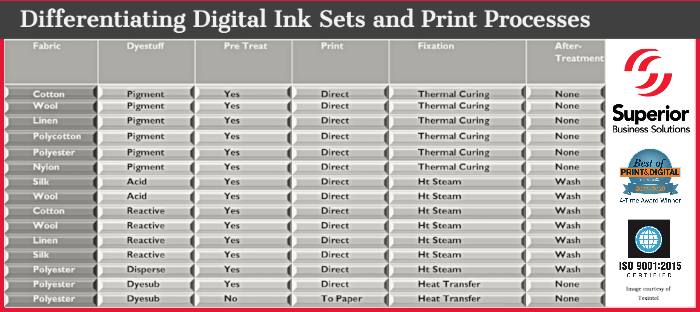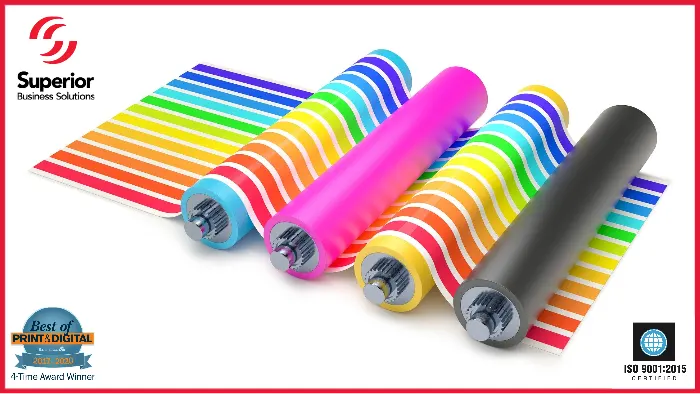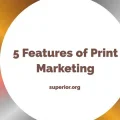A Primer to Printing on Fabric
You might say today’s post is “cut from a different cloth.” That is, in most of my posts I talk about printing business forms, proposals, and collateral materials like brochures and flyers. But I don’t want you to think Superior is only good when the medium is paper. We offer the best print supply chain management solutions for virtually every business, including those in the textile industry.
Printing on fabric (digital textile printing) can help you create many wonderful and effective tools in your marketing toolkit. And you probably encounter it more often than you realize.
- Trade show banners and tablecloths
- Unique displays and signage for a corporate environment
- Promotional items, from T-shirts to golf towels
- Special and commemorative gifts like afghans and tailgate blankets for employees and partners
Digital textile printing is increasing in popularity. For a great resource to help you understand its possibilities and the printing processes and possibilities involved, check out this one.
A “Lasting” Impression
Print on fabric can make a lasting impression on prospects, partners, trade show attendees and others. It has a distinctive look that can really attract attention to your name and message. But in order to deliver that positive exposure again and again, the print process must make that image “lasting” in another way: durability. Properly done, the printing can hold up for many years and many uses.
But printing on fabric does require knowledge and a specialized skillset. That’s why you need an experienced partner. Textile surfaces are different than paper, obviously. And depending upon materials, they can require a variety of different printing techniques.
 Five Digital Ink Sets: a Quick Look
Five Digital Ink Sets: a Quick Look
Digital textile printing is gaining in versatility and sophistication. But due to the wide variety of fabrics and inks available, many different ink-sets and processes may be required for a given application. Here, thanks in part to the Texintel website, are common five digital ink-sets and the processes required to apply them.
-
Dye-Sub Ink-set
Dye-sublimation is perhaps the most frequently used method, good for fixing color onto coated or uncoated polyester fabrics. Sublimation is a process in which a solid is turned directly into a gas without passing through the intermediate liquid state. This improves accuracy (for a sharper design) and impact (by making a wider range of colors available).
HOW IT WORKS: The pattern is printed onto a high-release transfer paper using a standard inkjet printer. That paper containing the image is placed next to the recipient textile in a high-temperature heat press. The in then “sublimates” to the textile with vivid color and an accurate, high-resolution image.
-
Reactive Ink-set
Another science-class throwback! Reactive ink-sets are organic compounds that create vivid colors on cottons, linens and other cellulosic fabrics. Through covalent bonding, the dyes become a physical part of the fiber component of the fabric through a chemical reaction.
HOW IT HAPPENS: Precoated fabric is printed directly through an ink-jet printer. Then it is processed slowly through a High-Temperature Steamer to fix the colors. Finally, it is washed and dried to remove excess color and to prevent subsequent fading.
-
Acid Ink-set
Another science lesson here, this one used mostly for printing wool, cashmere, angora, nylon, and silk fabrics. These inks are usually sodium salts of sulfonic acids. The process creates an ionic bond with the fibers of the fabric being printed.
HOW IT HAPPENS: A complex process much like the “reactive” ink-set above, with very similar steps in the process. Image printed directly onto pre-coated fabric via an ink-jet printer. Colors are fixed with a slow pass through a High-Temperature Steamer. It is then washed and dried to remove surplus color and prevent fading during subsequent washing.
-
Disperse Ink-set
This ink-set uses low-soluble dyestuff, dispersed in water vis dispersing agents. This changes things at the molecular level, allowing inks to be absorbed into the interstices of the fiber. It is most suited to polyester and acetate fabrics in High-Wear situations (like automobile production) that must endure high wear.
HOW IT HAPPENS: The actual printing process is nearly identical to the Reactive and Acid INk-sets above, using an ink-jet printer, followed by a pass through the High-Temperature Steamer.
-
Pigment Ink-set
In Pigment ink-sets, the colorant is contained in fine particles, dissolved and suspended in a carrier fluid. The ink is deposited onto the fabric, where the particles physically bond with the fabric.
HOW IT HAPPENS: The pre-coated fabric is dried as it is printed. It then undergoes image fixation in a baker or thermo-fixation device.
We’ll “Get Technical” For You
I hope you’ve found the tech talk here interesting. But you really don’t have to think about this if you don’t want to. That’s what we’re here for—just as Superior has been for thousands of businesses in our nearly 100 years of growing their success.
Our ISO certification holds us to customer-focused standards that don’t vary. That may especially comforting in a complex area like digital textile printing. And four consecutive Best of Print and Digital awards shows that we turn questions and ideas into business success stories.
Contact Superior for a FREE print management supply chain review. Whether your primary needs are for printing on paper or on fabric, our experience will make a material difference in your business success.




